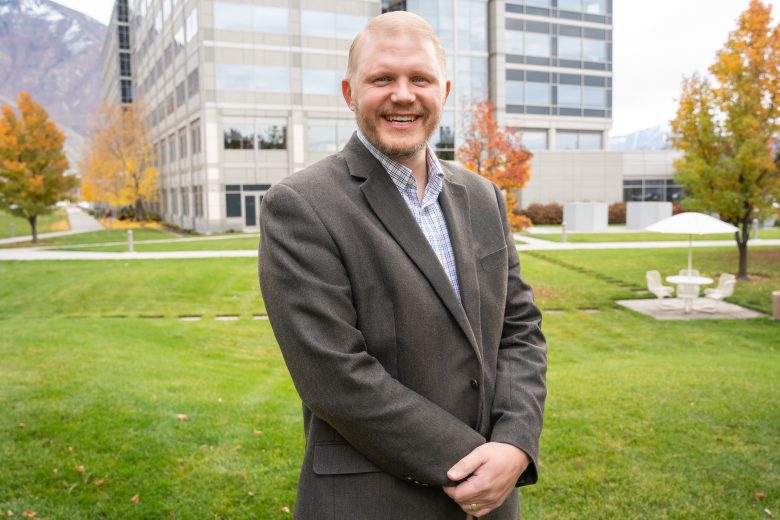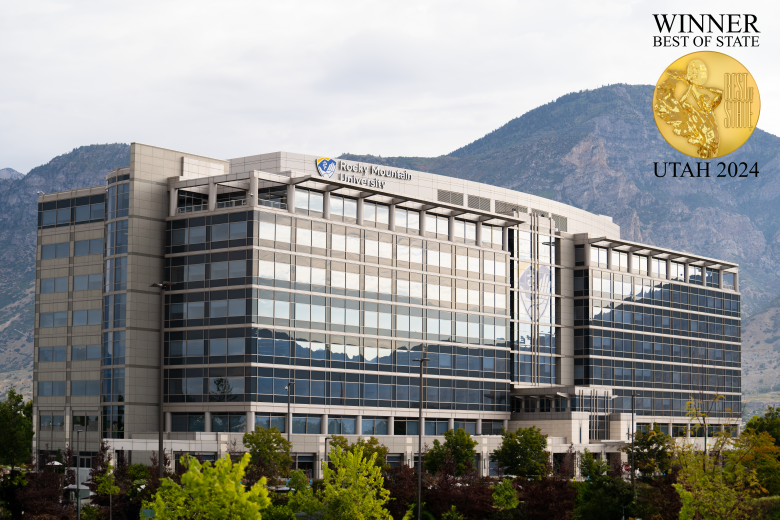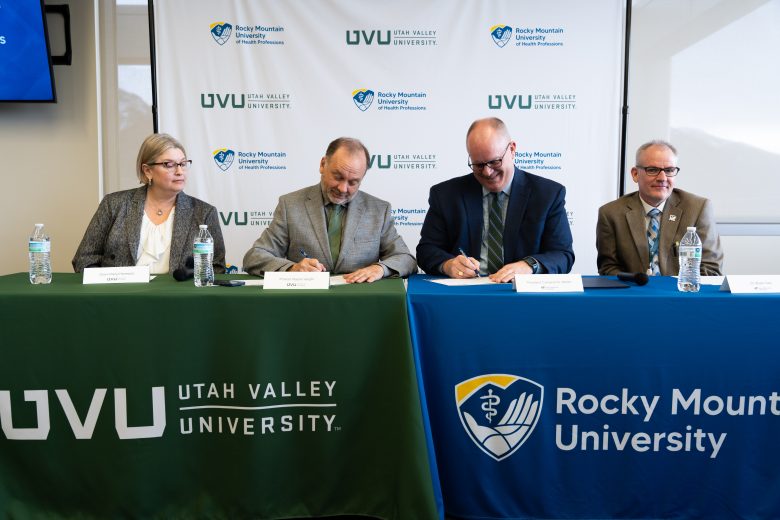Rocky Mountain University of Health Professions’ clinics continue providing important community service
PROVO, Utah, May 18, 2020 – With the on-going COVID-19 pandemic, global healthcare workers, the unsung heroes deep in the trenches of this crisis, continually serve to prevent the spread of the virus and heal those afflicted with it. Health services innovation appears daily, including at the pro-bono clinics under the authority of who are using unique telehealth options to serve an increased population of people needing physical and speech rehabilitation.
The Community Rehabilitation Clinic (CRC) and Center for Communication Disorders (CCD) in Provo, Utah, are non-profit 501 (C)(3) charitable organizations providing free rehabilitation services to an underserved community. At the CCD, services are provided by master’s degree students in speech-language pathology and qualified licensed staff. Doctor of Physical Therapy students from RMUoHP and volunteers from Brigham Young University and Utah Valley University assist skilled healthcare providers at the CRC.
“During a time when people are staying home, possibly becoming unemployed or temporarily unemployed, we find the need for our services increasing,” said Colby Clawson, PT, DPT, CSCS, and CRC clinic director. “People are stretched to the limit with medical insurance benefits going away while still needing rehabilitation and treatment. Additionally, many small rehabilitation clinics may have reduced the number of patients they can see or have closed altogether. These patients can continue to be served by CRC and CCD. We are able to fill a need for people increasingly affected by the pandemic along with our more traditional patients who may be indigents, those lacking in health insurance, or with no insurance. We provide our services regardless of their situation.”
The CRC and CCD do not require patient referrals to receive treatment and both continue to provide services through telehealth methods. People can simply contact the clinics to make appointments. The clinic staff is also reaching out to people that may have been former patients to let them know they can still receive care. Though referrals are not required, several healthcare facilities and clinics refer patients to the CRC or CCD as well.
Regarding telehealth at the CRC, “For physical therapy needs, we have to get creative since we are not currently permitted to put our hands on the patient,” said Crystal Miskin, PT, DPT, OCS, a physical therapist at the CRC. “We use Google Meet with the patients to perform a telehealth examination, which isn’t a complete examination but one we can do with the patient under our direction. We have them push or palpate or do tests on themselves.”
Patients can still receive a complete range of motion and do function tests to improve movement, see where movement is dysfunctional, and what muscles are responsive through the treatment for improved strength and movement.
“We can only be there through virtual video means, but we teach patients how to self-mobilize as we direct them,” said Miskin. “They use their own hands instead of our hands during the virtual rehab scenarios. The patient is now doing it, or a family member, as we discuss and direct them. We use therapeutic exercise with equipment they can find and use at home, such as milk jugs, water bottles, or anything that they can find that would create resistance. It’s different, but it works.”
Through this creative method, patients have been able to overcome either inflammatory or painful stages as they go about becoming stronger. The best-case scenario would include the therapists and assistants to be with the patient, but the creative somewhat limited approach continues to help patients rehabilitate while minimizing their risks from falls.
Regarding the CCD, Kristen Ipson, RMUoHP faculty in the Master of Science in Speech-Language Pathology program, said, “We’re able to continue plans of care with patients. The telehealth option continues to allow us to work with adults and children, target therapeutic goals, and work on speech production, literacy, and even different language skills.”
A CCD patient who recently began using a cochlear implant for hearing said her weekly aural rehabilitation sessions allowed her to connect with speech and hearing professionals while she was adjusting to listening with her device.
The clinics provide physical therapy rehabilitation and speech and language pathology services to people of Utah County. In 2019, the CRC provided 1,258 patients with 4,539 physical therapy rehabilitation treatments. These treatments (at current Medicare rates) provided a total cost savings of $1.2 million to the patients and their communities. The CCD delivered 1,710 individual or group treatment sessions and completed 139 client assessments during 2019. The Medicare equivalent for services provided in 2019 was $195,826.
Since both treatment clinics are pro bono, they depend upon charitable contributions from private foundations, corporations, municipalities, and individuals for their operational support.
About Rocky Mountain University of Health Professions
Founded in 1998 and located in Provo, Utah, Rocky Mountain University of Health Professions (RMUoHP) is accredited by the Northwest Commission on Colleges and Universities, an institutional accrediting commission recognized by the Secretary of the U.S. Department of Education. RMUoHP offers high-quality, evidence-based, and outcomes-oriented healthcare programs. www.rm.edu



